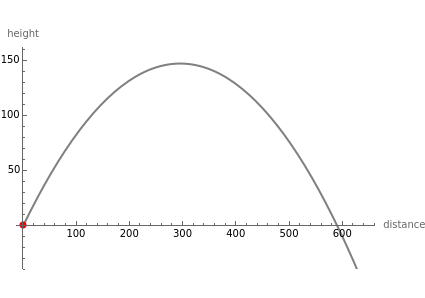Motion of Projectile with or without Air Resistance
Motion of Projectile with or without Air Resistance
This Demonstration shows the relationship between mass, gravity, air resistance, and initial angle on the motion of a projectile. The parabola (gray curve) is the path the object would take assuming no air resistance (drag), which corresponds to choosing "none" in the drag coefficient options.
The shape of the projectile influences its coefficient of drag, which determines how strongly air resistance affects an object's flight path. The higher the coefficient, the larger the effect. For shapes, you can choose "none," which has zero drag; "wing shape," such as the wing of an airplane with a very low coefficient of 0.2; a "sphere," which has a coefficient of 0.5; and a "flat plate," which is anything with a face of a large, flat surface area, with a coefficient of 1.28.
You can compare the total distance covered by the chosen trajectory to its analog with no drag resistance. Very high mass or velocity also lessens the effect of drag resistance because an object with a higher momentum is less impacted during shorter flight times.
